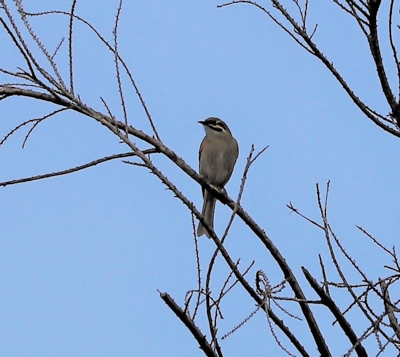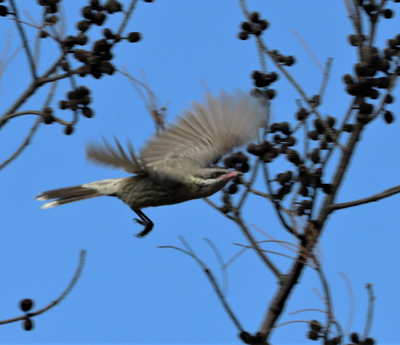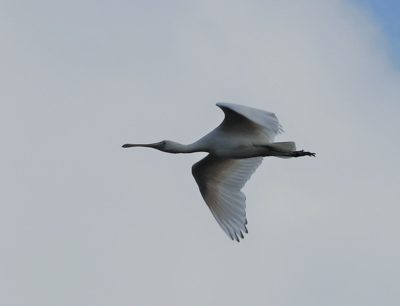Apr 2018 Bird survey
Although water levels in the large lakes dropped considerably last month, conditions are good for birds. Park volunteers saw six pelicans feeding on the large freshwater lake early that survey morning, so food, most likely Mosquito Fish Gambusia affinis, is plentiful. Other fish-eating birds observed included three cormorant species, a single Eastern Great Egret and White-faced Heron, and many more Hardheads and Hoary-headed Grebes compared to previous months.
Further, although the park vegetation is very dry, a diverse range of seasonal migrating land-based birds was present, including an unusually large number of Red Wattlebirds: 150 plus.
Interesting/notable sightings:
– A single Yellow-faced Honeyeater, a species not previously recorded. More may have been present as a small group of unidentified birds with this species’ characteristics was observed in flight, descending immediately behind the dead shrub where the single bird was seen and photographed.
– A single Striated Pardalote in a eucalypt near the windmill, a species not recorded in the park since August 2008 and August 2012.
– Seasonal visitors also included an unusually high number of Spiny-cheeked Honeyeaters, Flame Robins, Grey Fantails and Musk Lorikeets.
– George observed an interesting combination roosting together on the same fallen branch in the large freshwater lake: two Eastern Great Egrets, one White-necked Heron, one White-faced Heron and two Australian White Ibis. A great photograph but unfortunately George didn’t have his camera.
– Other very occasional visitors seen included a pair of Red-kneed Dotterels on the edge of a dull pink saltwater lake, and the large freshwater lake had a single Yellow-billed Spoonbill and single Cattle Egret – the latter apparently with a broken leg. In all, one of the best days in years!



